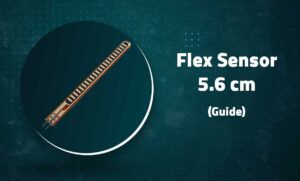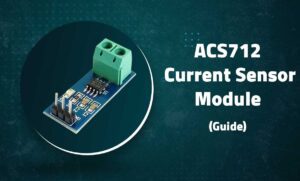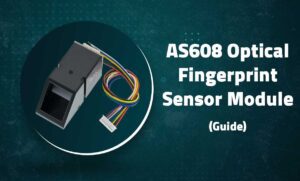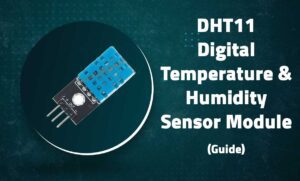PN532 NFC RFID Read/Write Module V3 Kit
PN532 NFC RFID Read/Write Module V3 Kit
Advanced Near Field Communication for Arduino and Embedded Systems
Introduction
The PN532 NFC RFID Module V3 is a highly integrated transmission module for 13.56MHz contactless communication. Based on NXP’s PN532 chipset, it supports read/write operations with various NFC and RFID tags including Mifare, NTAG, and FeliCa.
 Key Features
Key Features
Multi-Protocol Support
Works with NFC, Mifare, ISO/IEC 14443 A/B, FeliCa
Multiple Interfaces
I2C, SPI, and UART communication options
Fast Operation
Supports up to 424kbps data transfer rate
Easy Integration
Works with 3.3V or 5V systems including Arduino
Technical Specifications
| Operating Frequency | 13.56MHz |
|---|---|
| Supported Protocols | NFC, Mifare, ISO/IEC 14443 A/B, FeliCa |
| Communication Range | Up to 5cm (depending on antenna) |
| Interface Options | I2C, SPI, HSU (UART) |
| Operating Voltage | 3.3V – 5V DC |
| Current Consumption | ~100mA during operation |
| Data Transfer Rate | Up to 424kbps |
Pin Configuration

| Pin | Label | Description | Arduino Connection |
|---|---|---|---|
| 1 | VCC | Power (3.3V or 5V) | 5V |
| 2 | GND | Ground | GND |
| 3 | SDA | I2C Data | A4 |
| 4 | SCL | I2C Clock | A5 |
| 5 | IRQ | Interrupt Request | D2 |
| 6 | RST | Reset | D3 |
Note: The module includes jumpers to select between I2C, SPI, and UART interfaces
Wiring with Arduino (I2C)
// Basic I2C Connections: // VCC → 5V // GND → GND // SDA → A4 (SDA) // SCL → A5 (SCL) // IRQ → D2 (optional) // RST → D3 (optional) // For SPI interface, different connections are required
Important: Ensure correct interface jumpers are set before powering the module
Basic Tag Reading Example
// PN532 NFC Reader Basic Example (using Adafruit_PN532 library)
#include <Wire.h>
#include <Adafruit_PN532.h>
#define PN532_IRQ (2)
#define PN532_RESET (3)
Adafruit_PN532 nfc(PN532_IRQ, PN532_RESET);
void setup() {
Serial.begin(9600);
nfc.begin();
uint32_t versiondata = nfc.getFirmwareVersion();
if (!versiondata) {
Serial.println("PN532 not found");
while (1);
}
Serial.print("Found chip PN5"); Serial.println((versiondata>>24) & 0xFF, HEX);
Serial.print("Firmware ver. "); Serial.print((versiondata>>16) & 0xFF, DEC);
Serial.print('.'); Serial.println((versiondata>>8) & 0xFF, DEC);
nfc.SAMConfig();
Serial.println("Waiting for NFC tag...");
}
void loop() {
uint8_t success;
uint8_t uid[] = { 0, 0, 0, 0, 0, 0, 0 };
uint8_t uidLength;
success = nfc.readPassiveTargetID(PN532_MIFARE_ISO14443A, uid, &uidLength);
if (success) {
Serial.println("Found NFC tag!");
Serial.print("UID Length: "); Serial.print(uidLength, DEC); Serial.println(" bytes");
Serial.print("UID Value: ");
for (uint8_t i=0; i < uidLength; i++) {
Serial.print(" 0x"); Serial.print(uid[i], HEX);
}
Serial.println();
delay(1000);
}
}
Advanced Features
Tag Emulation
// Configure as NFC tag
nfc.setPassiveActivationRetries(0xFF);
nfc.startPassiveTargetIDDetection(PN532_MIFARE_ISO14443A);Mifare Classic Auth
// Authenticate with Mifare Classic
uint8_t keya[6] = { 0xFF, 0xFF, 0xFF, 0xFF, 0xFF, 0xFF };
success = nfc.mifareclassic_AuthenticateBlock(
uid, uidLength, 4, 0, keya);NDEF Message Writing
// Write NDEF URL to NTAG
uint8_t ndefprefix = NDEF_URIPREFIX_HTTP;
uint8_t url[] = { 'e', 'k', 'o', 's', 't', 'r', 'a', '.', 'c', 'o', 'm' };
success = nfc.ntag2xx_WriteNDEFURI(ndefprefix, url, sizeof(url));Peer-to-Peer
// Initialize NFC P2P
nfc.InitDepTarget();
// Configure as Initiator/Target
nfc.TgInitAsTarget();Troubleshooting
Module Not Detected
- Verify interface jumpers are correctly set
- Check I2C/SPI address with scanner
- Ensure proper voltage (3.3V or 5V)
No Tag Detection
- Move tag closer to antenna (1-5cm)
- Check tag compatibility (Mifare, NTAG, etc.)
- Verify antenna connections
Communication Errors
- Check wiring connections
- Add pull-up resistors if using I2C
- Try lower communication speed
Related Posts
MG90S Mini Digital 180° Servo
MG90S Mini Digital 180° Servo
Metal Gear, 2.2kg·cm Torque for RC and Robotics
Introduction
The MG90S is a compact di...
XKC-Y25-V Non-Contact Water Liquid Level Sensor
XKC-Y25-V Non-Contact Water Liquid Level Sensor
Capacitive Detection Without Physical Contact
Introduction
The XKC-Y...
Waterproof Ultrasonic Obstacle Sensor, Sensor with Separate Probe
+
Waterproof Ultrasonic Obstacle Sensor
Distance Measurement with Separate Waterproof Probe
Introduction
The Wa...
Water Level Depth Detection Sensor
Water Level Depth Detection Sensor
Liquid Measurement for Arduino and IoT Projects
Introduction
The Water Level Dept...
VL53L0X Purple Laser Distance Sensor Module
VL53L0X Laser Distance Sensor Module
High-Speed, High-Precision Time-of-Flight Distance Measurement
Introduction
The...
TCS34725 RGB Color Sensor Module
TCS34725 RGB Color Sensor Module
High-Accuracy Digital Color Detection with IR Filter
Introduction
The TCS34725 is a...
TCS3200 Color Sensor Module
TCS3200 Color Sensor Module
Precise RGB Color Detection for Arduino and Embedded Projects
Introduction
The TCS3200 C...
HC-SR501 PIR Motion Sensor Module
HC-SR501 PIR Motion Sensor Module
Passive Infrared Detection for Security and Automation Projects
Introduction
The H...
Flex Sensor 5.6 cm (Detect Bending Motion)
Flex Sensor 5.6cm
Bend Detection Sensor for Arduino and Wearable Electronics Projects
Introduction
The 5.6cm...
ACS712 Current Sensor Module
ACS712 5A Current Sensor Module
Hall-Effect Based AC/DC Current Measurement for Arduino Projects
Introduction
The AC...
AS608 Optical Fingerprint Sensor Module
AS608 Optical Fingerprint Sensor Module
High-Precision Biometric Recognition for Arduino and Microcontroller Projects
...
DHT11 Temperature and Humidity Sensor Module
DHT11 Temperature & Humidity Sensor
Basic Environmental Sensing with Status LED for Arduino Projects
Introduction...







Recent Comments